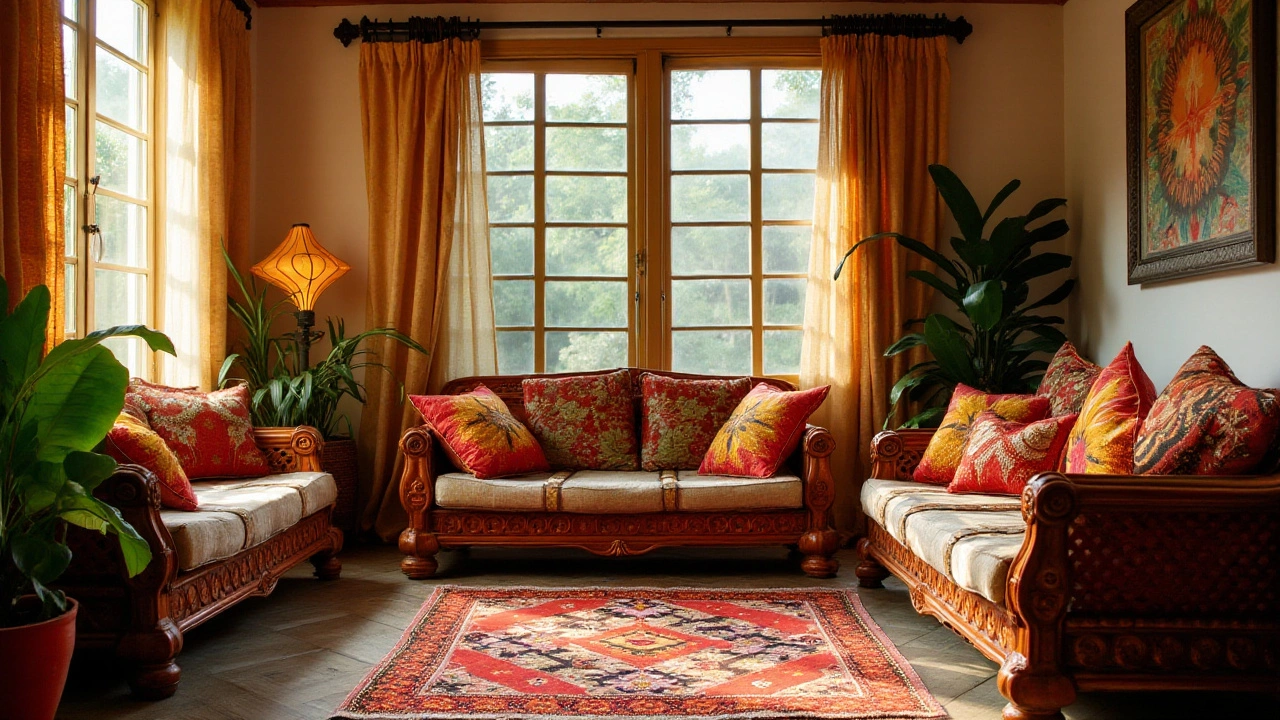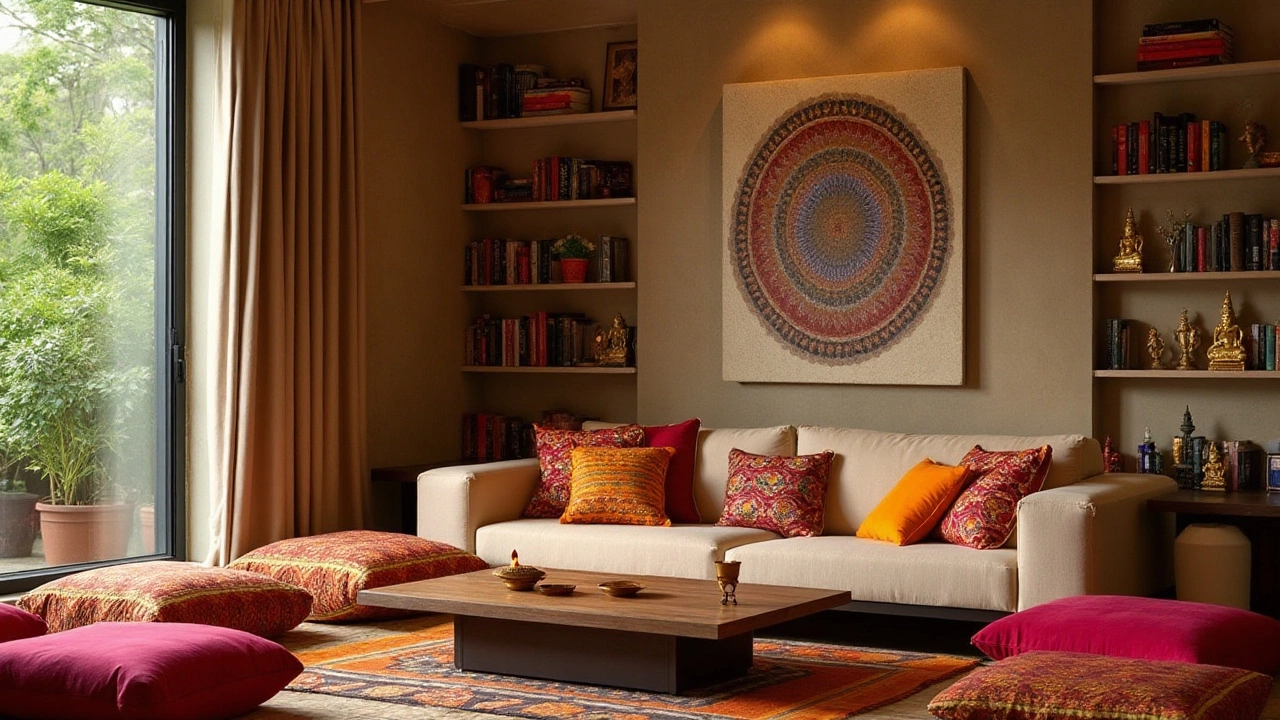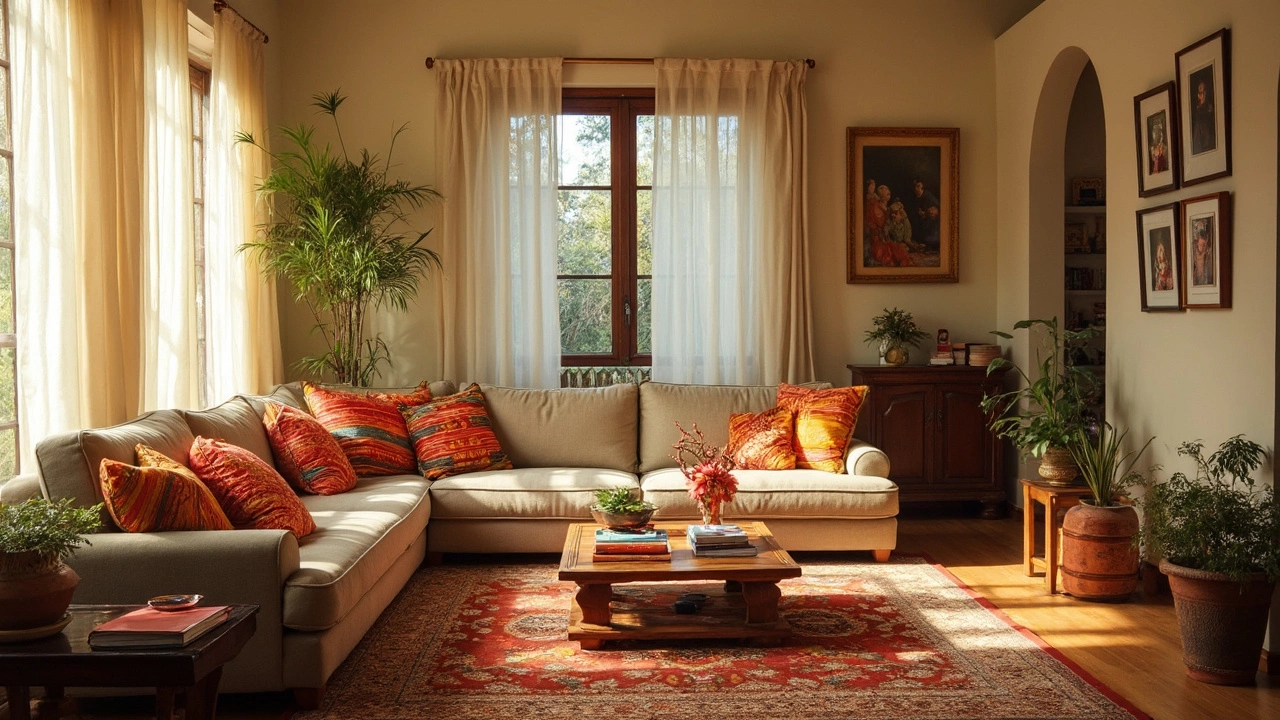Creative Ways to Refresh Your Living Room Décor

The living room is arguably the heart of any home, where you gather with family, entertain guests, or simply unwind after a long day. It's essential for this space to feel both cozy and reflective of your unique style. If your living room feels a bit stale, there are countless ways to inject new life into it without breaking the bank.
Something as simple as moving furniture around can completely change the atmosphere. Lighting, often an underrated element, can add drama or warmth as desired, while experimenting with colors and patterns can bring vitality and joy. By layering textures and incorporating personal touches, you bring depth and character that transforms the ambiance of the room.
Embark on the exciting journey of reimagining your living area as a space that truly represents you. Whether you choose bold changes or subtle enhancements, you'll find there's much pleasure in crafting a living room that feels fresh and engaging.
- Rearranging and Repurposing
- The Power of Lighting
- Playing with Colors and Patterns
- Incorporating Textiles and Textures
- Adding Personal Touches
Rearranging and Repurposing
Our minds tend to equate change with expense, under the assumption that a fresh look requires fresh purchases. But in truth, some of the most dynamic transformations arise from the simple act of rearranging existing elements. Furniture is not rooted to the floor, so consider rotating chairs, couches, and tables in unexpected ways to revamp the layout. This can open up space or create cozy nooks, shifting the energy and flow of the room.
Start by evaluating your room’s layout against your daily habits. Does your current setup encourage conversation, or is the couch oriented for solitary binge-watching? A strategic arrangement that supports your lifestyle can be achieved without splurging on new pieces. Grouping furniture differently, like forming a conversational circle with the addition of an ottoman or a pair of accent chairs, can redefine the function of your living room.
Repurposing items is equally important. Take that vintage trunk hidden away in storage and let it serve as a stylish coffee table, where visitors can gather around. A bookshelf might find a second life as a bar stand, adding character and utility. Reimagining the use of your items not only breathes new life into them but also ties your decor into a seamless story.
Embrace Open Space
Open spaces radiate a sense of calm and breadth. If your room feels crammed, balance is key. You might find that fewer pieces create the ideal open area, or moving certain items to different rooms can create a sense of spaciousness. Don't forget to consider the walls as potential spots for rearranging. Shelves, paintings, or mirrors can shift the intent and mood of the space entirely. A well-placed mirror can also lend a sense of depth by reflecting light and widening the perceived area."Rearranging furniture can be a cost-effective way to give your living room a new look and feel, while still maintaining the elements that make your space uniquely yours." — Sarah Richardson, Interior DesignerTaking the time to move items around—not just physically but also in your perception—can unveil fresh perspectives. It's not always about adding more, but refining and highlighting what you already possess.
Sometimes, something as simple as changing your focal point can make a significant difference. If the television dominates the room's attention, try minimizing its influence. You might find that the art piece you once passed off serves better as the visual anchor. Deliberately repurposing your living room not only refreshes the space but invites you and your guests to experience the area anew, every time.
The Power of Lighting
When considering ways to breathe new life into your living room decor, one often overlooked aspect is the transformative effect of lighting. Lighting plays a crucial role in how a room is perceived and can dramatically alter the mood of the space. Think of lighting as the artist's brushstroke – it can highlight your favorite furniture pieces, create cozy nooks for reading, or even make your space seem larger than it is. Task lighting, ambient lighting, and accent lighting each serve different purposes, and finding the right balance can create a cohesive look that's both functional and inviting.
Task lighting is essential for areas where you perform specific activities, like reading or working on puzzles. Consider stylish floor lamps with adjustable arms or sleek table lamps with dimmers. Ambient lighting provides the general illumination needed for everyday activities and is usually the main source of light in a room. Think of ceiling-mounted fixtures, recessed lights, or fashionable LED strips lining shelves or stairways.
"Good lighting is absolutely key; it can make or break really good interior design. Enlightened spaces can improve one's quality of life," notes established designer Kelly Hoppen.Accent lighting, on the other hand, adds drama and depth, focusing attention on art, bookshelves, or architectural details using strategically placed uplights or spotlights.
Natural light can considerably enhance the comfort and aesthetics of your space. Ensure your windows are unobstructed and use light, airy curtains to let maximum daylight in. If natural light is scant, mirrors can be your best friend, bouncing light around the room to create a brighter atmosphere. Chandeliers and statement lights aren't just for entryways; they can add an air of elegance and character to your living room, becoming conversation starters while effectively brightening the room. Using a mix of lighting sources, such as pendant lights above a coffee table or sconces on either side of a fireplace, helps create layers of light, offering both functionality and ambiance. LED lamps with adjustable color temperatures allow you to customize the mood: cooler tones for energy, warmer hues for relaxation.
It's also worth keeping sustainability in mind. Opt for energy-efficient bulbs like LEDs, which last longer and use less electricity. An often cited fact, according to the U.S. Department of Energy, is that LED bulbs use at least 75% less energy and last up to 25 times longer than incandescent lighting. Selecting energy-efficient lighting not only benefits the environment but also reduces your energy costs significantly. Pairing these with smart plugs can ensure lights are off when they're not needed, adding another layer of convenience. In essence, lighting isn't just about brightening up a room—it's about creating a space that feels alive and aligns with your lifestyle.

Playing with Colors and Patterns
When it comes to enlivening your living room decor, venturing into the realm of colors and patterns can offer transformative results. Colors have the innate ability to influence mood and perceptions, breathing vitality into spaces that may have grown dull. You could, for instance, choose a bold accent wall to become the center of attention, drawing the eye and creating a compelling focal point. Deep shades of teal or emerald can impart a sense of luxury and calm, while warmer hues like mustard yellow or coral can evoke energy and warmth. Pairing these colors thoughtfully with complementary tones or stark contrasts can create balance and harmony.
However, picking the right shade and pattern calls for a bit of knowledge and intuition. Understanding the color wheel and how colors interact is a significant first step. This simple yet powerful tool can help you choose colors that complement or contrast artfully. For those apprehensive about bold colors, starting with accessories such as cushions, throws, or rugs can be an effective way to incorporate new hues without overwhelming the space. A geometric patterned rug or striped cushions can pack a punch, adding style and interest without requiring a full-scale revamp.
"A good rule of thumb for balanced color schemes is the 60-30-10 approach," suggests renowned interior designer Nate Berkus. "Use 60 percent of a dominant color, 30 percent of a secondary shade, and keep about 10 percent for accents."
After choosing your color palette, incorporating patterns is the next creative challenge. Patterns are diverse, offering everything from floral and abstract to minimalist and ornate motifs. They can introduce rhythm to a room, drawing attention and adding layers of visual intrigue. If you are feeling adventurous, mixing patterns can yield dynamic results. The key to successful pattern layering is scale and common hues. Ensure varied pattern scales, with at least one element tying them all together, such as a shared color. This approach avoids chaos, instead weaving a sorted, vibrant tapestry across the environment.
Let's not overlook wallpaper, which, having made a substantial comeback, provides endless possibilities to elevate your living space. Peel-and-stick variants are perfect for those wanting to try bold patterns without commitment, allowing for easy application and removal. With advancements in printing technology, wallpaper options offer realistic textures, adding dimension that simple paint cannot replicate. For those eager for a retro vibe, consider wallpapers with botanical prints or mid-century geometric designs that speak to an era's unique flair. Whether setting a dramatic scene or infusing the room with a lighthearted aesthetic, wallpaper delivers versatile creativity.
Finally, textiles offer another layer of artistry in your pattern palette. Fabric wall hangings, artfully draped curtains, or even a large, plush throw blanket can introduce tactile patterns alongside their visual impact. The beauty of using textiles lies in their ability to be easily swapped out, aligning your living room’s look with seasonal shifts or a sudden urge for change. In conclusion, thoughtfully curated colors and patterns can significantly uplift interior design, making the living room not just a space to pass through, but one in which to linger and savor daily moments. Remember, decoration is a form of personal expression, and when approached with imagination, even the boldest combinations can make your living room a vibrant topic of conversation.
Incorporating Textiles and Textures
There's an incredible world of textures and textiles waiting to breathe new life into your living room decor. By choosing different materials and fabrics, you can add depth, warmth, and personality to a space that's central to home life. From the rich elegance of velvet to the rugged charm of burlap, there are endless options to suit any style preference. Textiles are an excellent tool for both subtle sophistication and bold statements, offering a tactile experience that enhances visual appeal.
Start by considering the role of various elements like cushions, throws, curtains, and rugs. These items can be swapped out seasonally or on a whim to provide an instant refresher. Experimenting with layering different textures, such as placing a soft woolen throw over a leather sofa or draping linen curtains against a painted wall, can create a dynamic contrast that feels inviting. Weaving together different textures in your space effectively expresses complexity without chaos, achieving a welcoming atmosphere. According to interior designer Nate Berkus, "Texture is one of the most fundamental elements of interior design."
"Texture is one of the most fundamental elements of interior design," Nate Berkus
An approach you might find rewarding is mixing natural and synthetic materials. This could mean pairing a jute rug with a silk cushion or blending cotton with faux fur accents. These combinations not only provide visual interest but also introduce a tactile variability that's pleasing to the touch. Environments rich in texture often appear more layered and thoughtfully curated. Opt for handwoven textiles—they often have a unique, artisanal quality that tells a story and adds character. Embrace the imperfections and individuality of these pieces, as they can lend a sense of authenticity and nuanced beauty.
Moreover, don't underestimate the power of patterns found within textiles. Bold geometric designs or intricate florals can draw the eye and serve as a statement piece within the room. Small prints, on the other hand, provide a background interest without dominating the space. A carefully chosen patterned textile can act as an anchor around which you base room color schemes and additional décor decisions. This deliberate approach eases the decision-making process and harmonizes various elements within your living space.
If you're leaning towards eco-friendly options, there are plenty of sustainable materials to choose from. Organic cotton, bamboo, and recycled polyester offer environmentally responsible alternatives that do not compromise on style or comfort. These options are gaining popularity as more homeowners look to reduce their carbon footprint without sacrificing elegance. Considerations of sustainability in fabric choices reflect a growing trend where style meets responsibility, providing peace of mind and a stylish living room to greet your guests.
Finally, textiles often tell a story. They bring in a sense of history or even a touch of exotic allure. Vintage fabrics can evoke nostalgia, while ethnic patterns might transport you to far-off lands. Adding a tapestry or woven wall art piece can serve as a focal point, carrying cultural significance or personal meaning. These stories, stitched into the fabric, add layers to the narrative of your home, making your living room not only stylish but meaningful as well.

Adding Personal Touches
No two living rooms should mirror one another, for it's within these walls that your personal story unfolds. Elevating living room decor doesn't always mean investing in the latest trends; rather, it's about weaving personal elements through the space that speak to who you are. Family photos tell stories words often cannot express, creating focal points that invite joy and nostalgia. Consider arranging these photos into a gallery wall that captures significant moments over the years, as this can trigger lovely conversations when friends are visiting. Choosing assorted frames adds an eclectic and inviting atmosphere, whereas a consistent theme can keep the aesthetic clean and modern.
Consider introducing handmade artworks or cherished heirlooms that infuse your space with history and character. Such items, placed as centerpieces, are imbued with a warmth factory-made products often lack. Whether it's a velvet armchair inherited from your grandmother, or a pottery vase you crafted in an art class, these pieces communicate deeply personal narratives and foster a welcoming ambiance. Displaying books that have shaped your perspective or inspired you over the years also lends your living area intellectual charm, reflecting a depth of character as guests catch a glimpse of your literary journey.
Embrace Personal Collections
For those with a penchant for collecting, integrating your collections into your living room decor can breathe life into your space. Be it vintage cameras, globe-trotting souvenirs, or even vinyl records, displaying a collection you adore creates an engaging theme. It not only enhances the aesthetic value but also instills a sense of achievement and memory with every gaze. Ensure these collections are displayed thoughtfully on shelves or decorative stands, avoiding clutter while making them accessible for occasional use or show.In a world constantly evolving, it's worth noting the benefits of bringing nature indoors, nothing screams personal touch louder than nurturing live plants. Whether you're a novice or a green-thumbed enthusiast, opting for planters that suit your style can marry taste and nature in harmony. Indoor plants such as ferns and succulents do not just accentuate your decor but purify the air as well. According to studies, they help reduce stress levels and boost moods, which can make your living room a therapeutic retreat.
"The ache for home lives in all of us, the safe place where we can go as we are and not be questioned." - Maya Angelou
Adding personal touches is about reflection, identity, and comfort. It's about translating your uniqueness into a language that unfolds through decor. Next time you're in the room, harness that creative flair and embark on shaping the living space of your dreams. Let it transform into a habitat where every corner whispers your name and the energy within resonates warmth and welcome.

